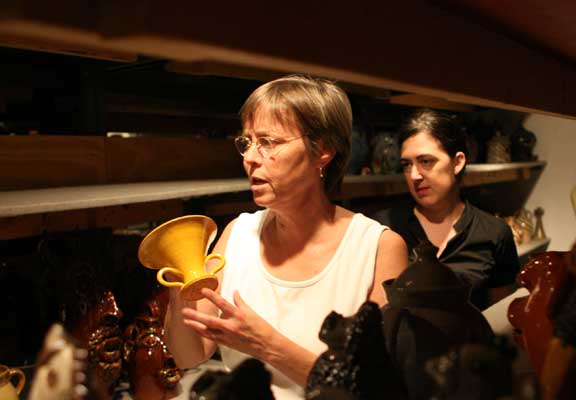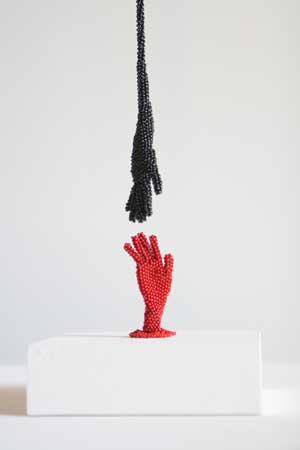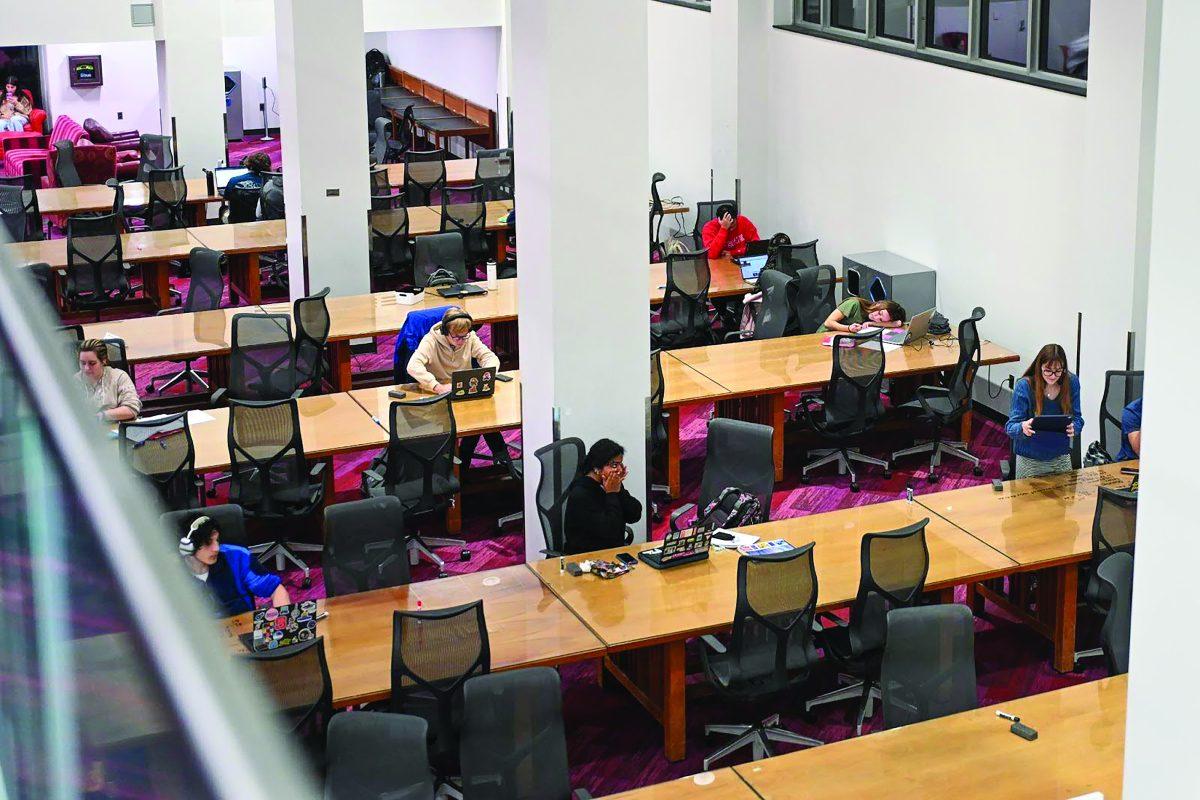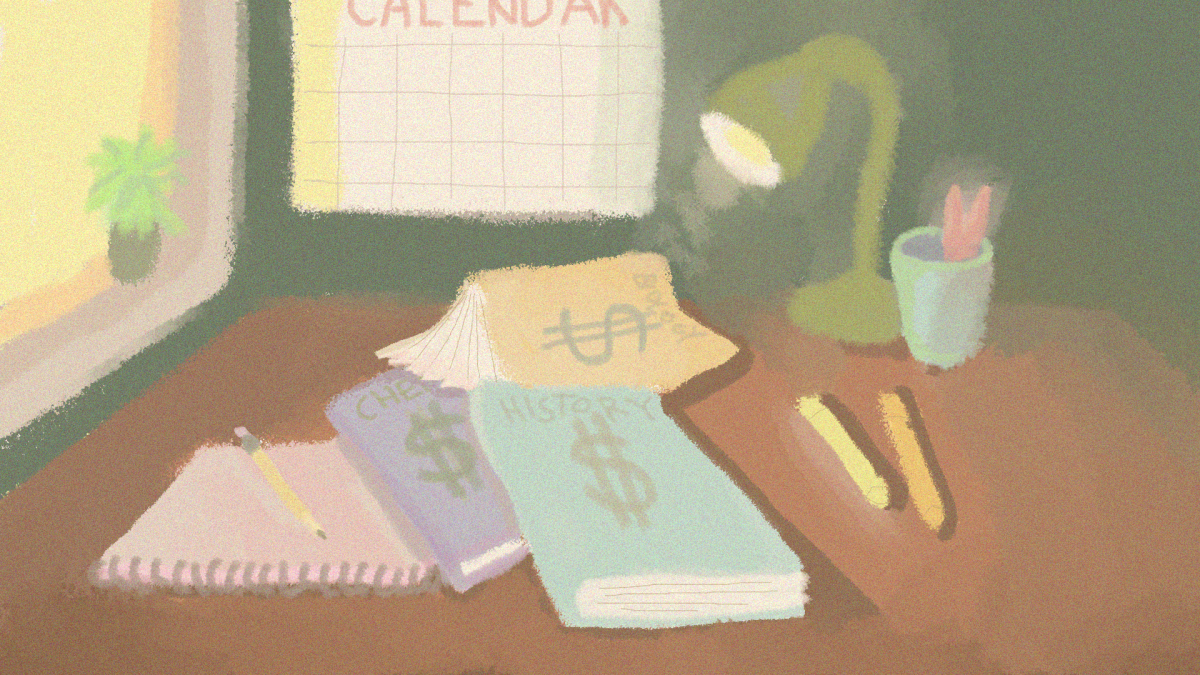Small beaded hands fill a wooden box.
Combs hang from the ceiling, twisting into a spiral that reaches the ground.
A tiny hand made of hair faces its palm upward.
Students admire artworks in the Gallery of Art and Design.
These are only a few of the pieces of artwork displayed in the Sonya Clark exhibit entitled “Tangles, Teeth & Touch.” Sonya Clark’s artwork, among other visiting artists’ artwork from Raleigh and the surrounding areas, fills the three large rooms of the Gallery of Art and Design on the second floor of Talley Student Center. But the gallery has thousands of artworks that students cannot see in a store room behind the gallery.
Hundreds of pieces of bright pottery stacked on bookshelves.
Black and white pictures of snow-covered trees taken by Ansel Adams.
Textiles, stored in crates, from everywhere but Antarctica.
“We have over 20,000 objects based on the curricula of the University,” Zoe Starling, the curator of educational resources, said.
According to Starling, as soon as an exhibit is up, the directors of the gallery are already planning on what is next.
“We plan three years in advance,” Starling said.
The directors can choose what is to be displayed next by depending on recent donations, but they also rely on their permanent collection, which is full of artwork of all shapes and sizes.
The photography portion of the collection includes prints from as far back as 1840 and represents all types of photography including 20th century documentary photographs.
“The photography collection was interesting; Hondros was able to capture the moment in his photography,” Matt Lunn, a senior in natural resources-marine and coastal, said.
Chris Hondros, an alumnus, is one of many contemporary photojournalists who is featured in the permanent collection. Hondros’ work features images of war including photographs from Angola, Liberia and Pakistan.
“Hondros travels to warzones around the world — his work is very personal and powerful,” Starling said.
To the right of the photography is a small room in the corner stuffed full of hanging clothing. A beautiful 19th century Chinese dragon robe with delicate embroidery hangs on the rack farthest from the door. Another evening coat from the 1930s made out of paisley would typically be worn to the opera, Gregory Tyler, the collections manager, said. More textiles are sorted in boxes labeled with the place and time period they are from. Costumes for cocktail parties in the 1930s and textiles from all over the world are carefully sorted into labeled boxes to preserve them for many years to come.
The next room features shelf after shelf of handmade pottery.
“We’ve been collecting pieces for the first four cases [in Talley Ballroom],” Tyler said. “These are my favorite,” she said, and she pointed to two small identical yellow ceramic pieces. “They’re just so sassy, with their arms turned down like they’re going to get up and shimmy.”
The ceramic pottery pieces are created different ways. Some wood-fired pieces spend as many as six days in the fire. One pot was wood-fired with salt to create the orange peel effect.
“If salt is thrown in the kiln when it is hot, it forms a hard surface called the orange peel effect,'” Tyler said.
From photography to textiles to ceramics and more, the gallery has more artwork than what the students see in the three main rooms.






